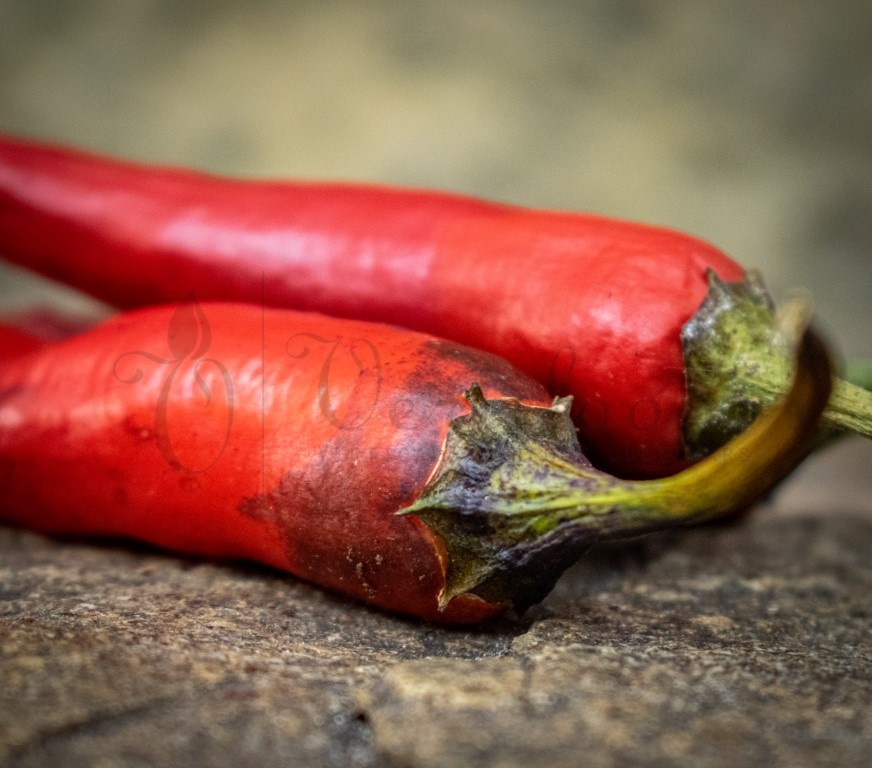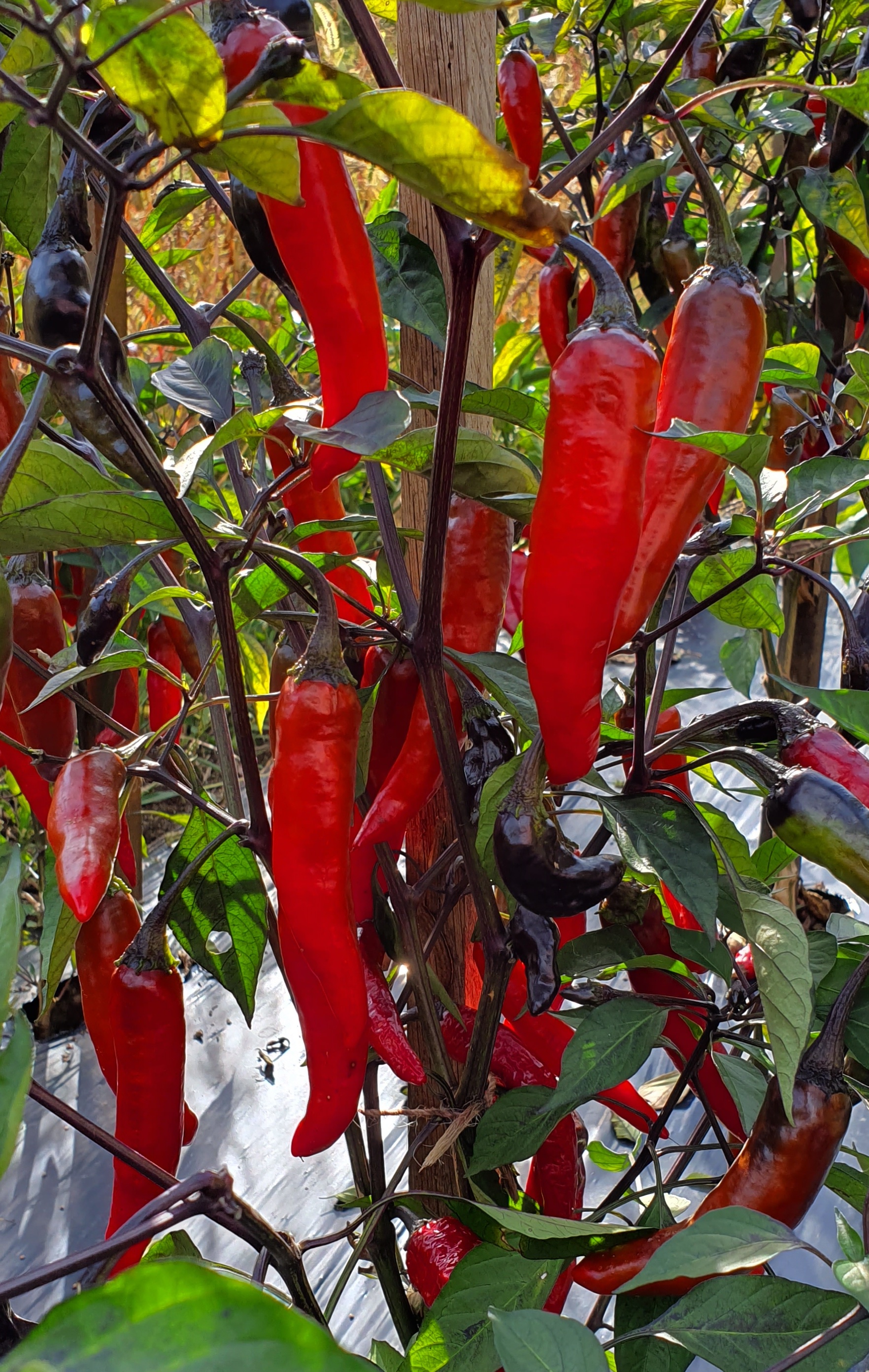

#Murasaki purple skin
Murasaki Purple peppers are an excellent source of anthocyanins, pigments found within the skin that give the pepper its dark purple hue. Chefs incorporate Murasaki Purple peppers into culinary preparations to highlight their crisp, dense consistency, sweet flavor, and unusual coloring. The peppers are traditionally grown in home gardens and through select growers, and the variety is valued as an ornamental plant as the peppers ripen at different times, giving the plants a multi-colored appearance. Murasaki Purple peppers are a specialty variety seldom found outside of its native prefecture. Murasaki translates from Japanese to mean “purple,” and the peppers are also known as Murasaki Togarashi and Nara Murasaki in Japan. The heirloom peppers have been cultivated in the Nara Prefecture of Japan for hundreds of years and highly favored for their unique coloring and sweet, heatless nature. Murasaki Purple peppers, botanically classified as Capsicum annuum, are a rare Japanese sweet pepper belonging to the Solanaceae or nightshade family.

Murasaki Purple peppers are available in the summer through fall. In addition to the peppers, the plant is distinguished by its unique purple-hued stems, veins, and flowers. Murasaki Purple peppers are crunchy with a mild and sweet, heatless flavor.

The pods are connected to a fibrous, purple-green stem, and underneath the surface, the flesh is crisp, green, and aqueous, encasing a central cavity filled with white pith and many small, round and flat, cream-colored seeds. The skin is glossy, waxy, thick, and smooth, ripening from green to dark purple, almost black, to bright red when mature. Murasaki Purple peppers are elongated, straight to slightly curved pods, averaging 15 to 20 centimeters in length and 2 to 3 centimeters in diameter, and have a conical shape tapering to a rounded point on the non-stem end.


 0 kommentar(er)
0 kommentar(er)
